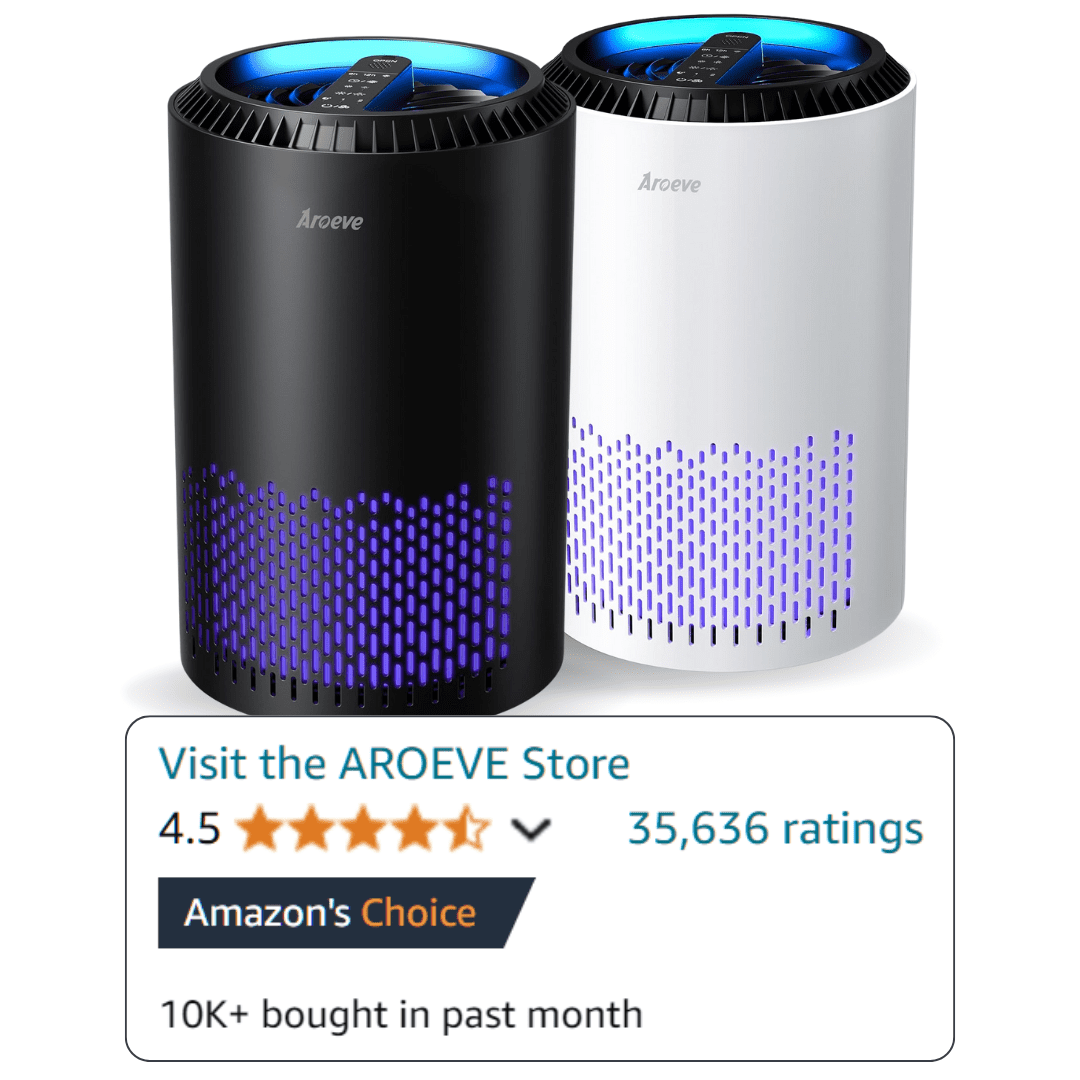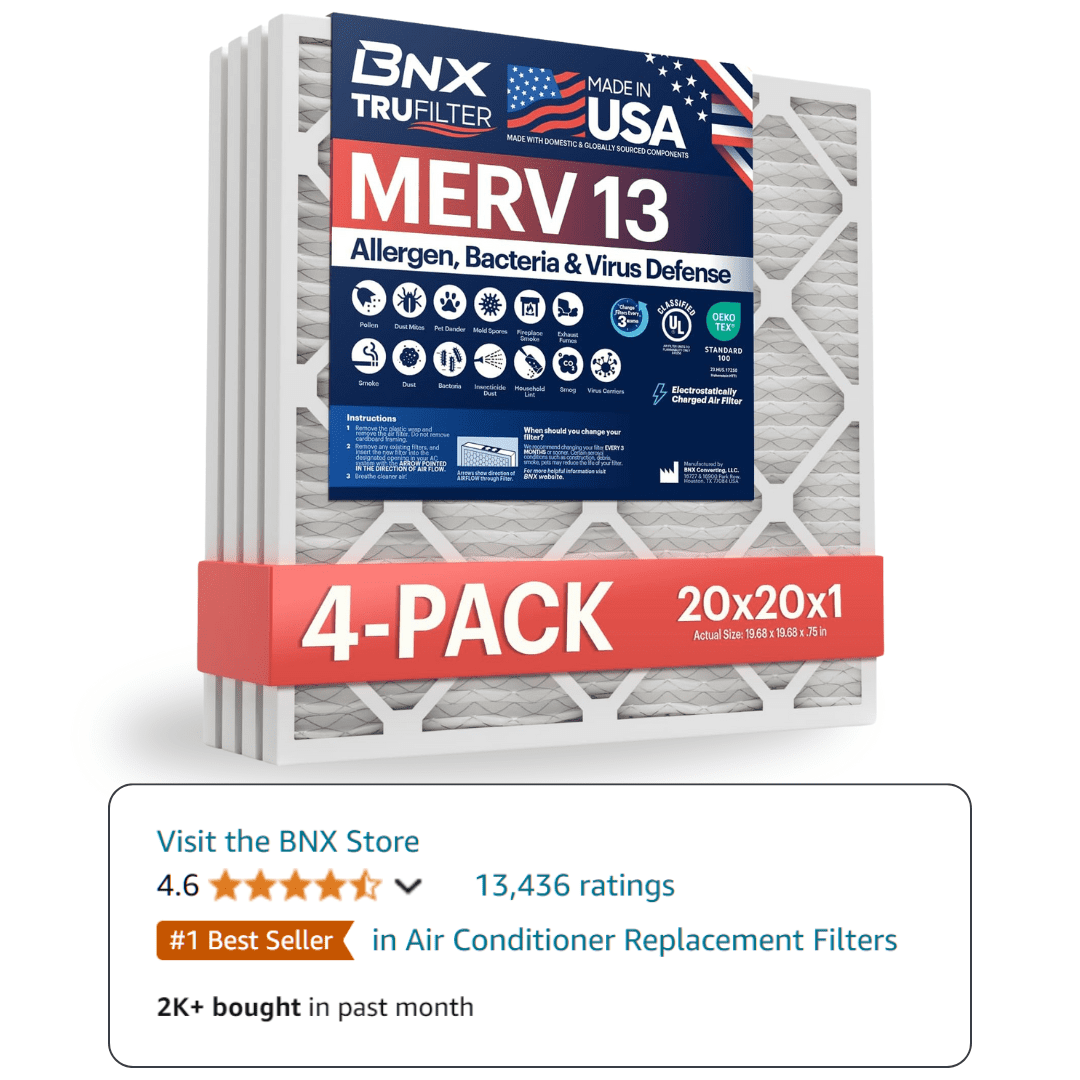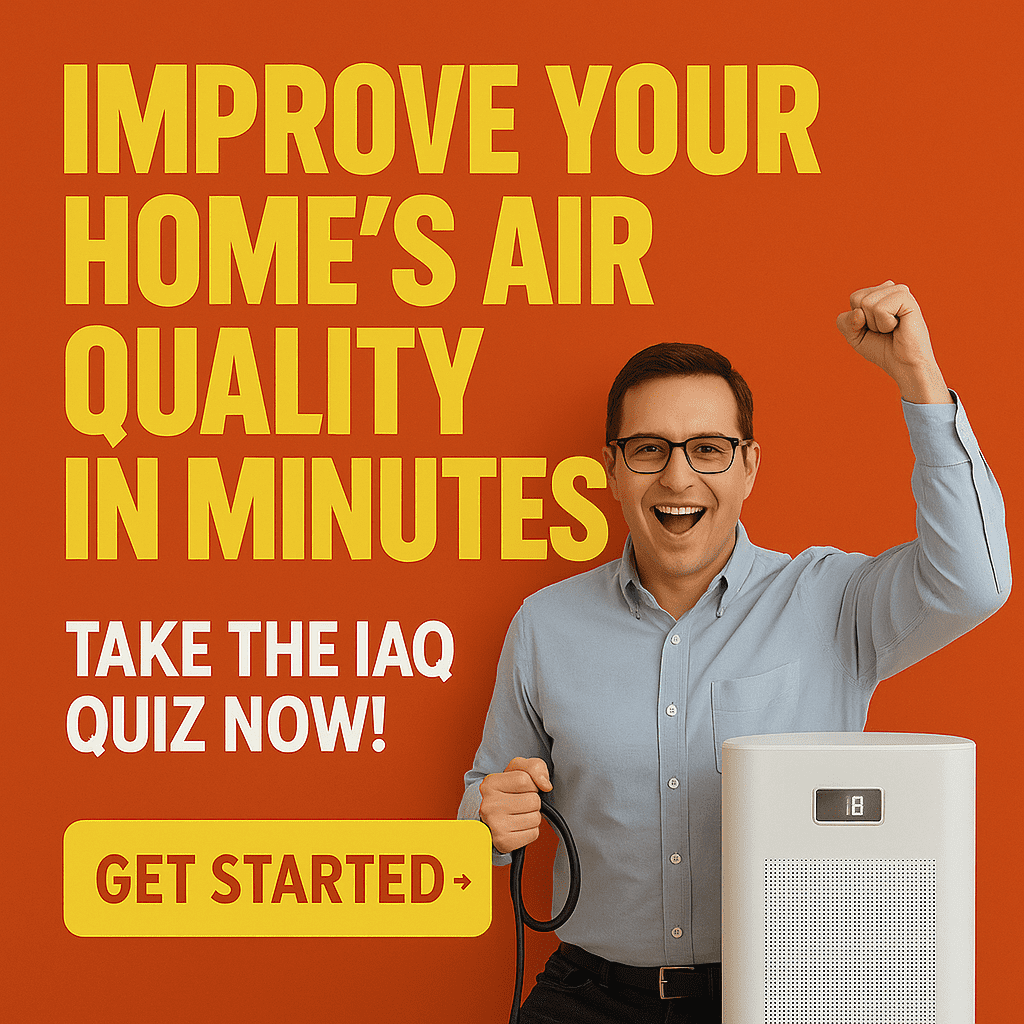Professional indoor air quality services address contamination issues that standard HVAC maintenance and consumer-grade air purifiers cannot resolve. These specialized services combine advanced testing equipment, certified expertise, and targeted remediation strategies to identify and eliminate specific pollutants affecting your home’s air quality.
What Are Indoor Air Quality Services?
Comprehensive IAQ Assessment Process
Professional IAQ assessments use calibrated instruments to measure particulate matter, volatile organic compounds (VOCs), carbon dioxide levels, humidity, and biological contaminants. Certified technicians collect air samples at multiple locations and times to establish baseline conditions and identify pollution sources.
The assessment process includes visual inspection of HVAC systems, moisture intrusion points, and potential contamination sources. Technicians document findings with digital photography and detailed measurements, creating a comprehensive report that maps your home’s air quality profile.
Professional Testing vs DIY Monitoring
Consumer air quality monitors provide general readings but lack the precision and range of professional equipment. Professional particle counters detect particles as small as 0.3 microns, while consumer devices typically measure particles above 2.5 microns. This difference matters when identifying fine particulates from combustion sources or industrial pollution.
Professional VOC analyzers identify specific chemical compounds and their concentrations, enabling targeted remediation. Consumer monitors provide general VOC readings without identifying the source chemicals, limiting their usefulness for developing effective solutions.
Service Categories: Testing, Remediation, Maintenance
Testing Services include comprehensive air sampling, surface contamination analysis, and HVAC system evaluation. These services typically cost $300-800 depending on home size and testing scope.
Remediation Services address identified problems through source removal, containment, or neutralization. Costs range from $1,000-5,000+ depending on contamination type and extent.
Maintenance Services provide ongoing monitoring and preventive measures to maintain improved air quality. Annual maintenance contracts typically cost $200-500 and include filter changes, system cleaning, and periodic testing.
When You Need Professional IAQ Services
Health Symptoms Indicating Poor Air Quality
Persistent respiratory symptoms, unexplained headaches, or fatigue that improve when away from home indicate potential air quality issues. The EPA Indoor Air Quality Guidelines list specific symptoms that warrant professional investigation, including chronic coughing, throat irritation, and eye irritation.
Multiple family members experiencing similar symptoms simultaneously suggests environmental rather than individual health issues. Professional assessment becomes critical when symptoms persist despite medical treatment or when sensitive individuals like children or elderly residents are affected.
Home Conditions Requiring Professional Assessment
Water damage, even minor incidents, creates conditions for mold growth within 24-48 hours. Professional assessment identifies hidden moisture and potential mold contamination that visual inspection cannot detect.
Homes with attached garages, nearby industrial facilities, or heavy traffic exposure require professional evaluation for carbon monoxide, particulates, and chemical contamination. Standard residential ventilation systems cannot adequately address these external pollution sources.
Post-Construction and Renovation Scenarios
New construction and major renovations introduce VOCs from building materials, adhesives, and finishes. Professional testing identifies specific compounds and their concentrations, enabling targeted ventilation strategies to accelerate off-gassing.
Asbestos and lead paint disturbance during renovation requires professional assessment and remediation. DIY testing cannot provide the accuracy needed for safe remediation planning.
Types of Professional IAQ Services
Air Quality Testing and Analysis
Professional air sampling uses calibrated pumps and collection media to capture specific contaminants for laboratory analysis. Technicians collect samples at breathing height in occupied areas and compare results to established health standards.
Surface sampling identifies contamination on furniture, walls, and HVAC components. This testing reveals pollution sources that air sampling might miss, particularly for settled particles and biological contaminants.
HVAC System Evaluation and Cleaning
Professional HVAC evaluation includes ductwork inspection using cameras and airflow measurement devices. Technicians identify leaks, blockages, and contamination that reduce system efficiency and distribute pollutants throughout the home.
NADCA certified cleaning services remove accumulated debris, biological growth, and chemical residues from ductwork and system components. This process requires specialized equipment and containment procedures to prevent contamination spread.
Mold and Moisture Assessment
Professional mold assessment combines visual inspection, moisture measurement, and air sampling to identify active growth and spore concentrations. Certified inspectors use thermal imaging cameras to detect hidden moisture sources behind walls and under flooring.
Moisture assessment includes relative humidity measurement, surface moisture detection, and identification of water intrusion sources. This comprehensive approach addresses both visible mold and conditions that support future growth.
Ventilation System Design and Installation
Professional ventilation design follows ASHRAE Standard 62.2 requirements for residential air exchange rates. Engineers calculate ventilation needs based on home size, occupancy, and local climate conditions.
Installation includes balanced ventilation systems that provide controlled fresh air intake while exhausting stale air. These systems integrate with existing HVAC equipment to maintain energy efficiency while improving air quality.
Air Purification System Recommendations
Professional recommendations consider specific contaminants identified during testing rather than generic air cleaning approaches. Technicians specify filtration efficiency, airflow requirements, and maintenance schedules based on your home’s unique conditions.
System sizing calculations ensure adequate air processing capacity for your home’s volume and contamination levels. Undersized systems provide inadequate cleaning, while oversized systems waste energy and create excessive noise.
Choosing the Right IAQ Service Provider
Certifications to Look For (NAFA, ASHRAE, NADCA)
NAFA certification demonstrates expertise in air filtration principles and applications. Certified professionals understand filter efficiency ratings, pressure drop calculations, and system integration requirements.
ASHRAE membership indicates knowledge of ventilation standards and energy-efficient system design. Look for professionals with active participation in local ASHRAE chapters and continuing education credits.
NADCA certification specifically covers duct cleaning procedures and contamination assessment. This certification requires hands-on training and periodic recertification to maintain current standards.
Questions to Ask Potential Contractors
Request specific equipment lists and calibration certificates for testing instruments. Professional-grade equipment requires annual calibration to maintain accuracy, and contractors should provide documentation of recent calibration dates.
Ask for sample reports from similar projects to evaluate thoroughness and clarity. Quality reports include detailed findings, specific recommendations, and clear explanations of health implications.
Inquire about insurance coverage and bonding for remediation work. Professional contractors carry liability insurance and surety bonds to protect clients from potential damage during remediation activities.
Red Flags to Avoid
Avoid contractors who recommend expensive remediation before completing comprehensive testing. Legitimate professionals identify specific problems before proposing solutions.
Be wary of door-to-door solicitors or high-pressure sales tactics. Reputable IAQ professionals work by referral and appointment, not through unsolicited visits.
Contractors who cannot provide current certifications, insurance documentation, or references from recent clients lack the credentials necessary for professional IAQ work.
Cost Analysis: Professional Services vs DIY
Average Service Costs by Type
Basic air quality testing ranges from $300-500 for standard residential assessment including particulate matter, VOCs, and basic biological sampling.
Comprehensive IAQ assessment costs $500-800 and includes detailed HVAC evaluation, moisture assessment, and surface contamination testing.
Mold inspection and testing typically costs $400-600 for visual inspection, moisture measurement, and air sampling in affected areas.
Professional remediation varies significantly based on contamination type and extent, ranging from $1,000 for minor mold remediation to $5,000+ for comprehensive HVAC cleaning and air purification system installation.
ROI on Professional IAQ Improvements
Professional IAQ improvements reduce healthcare costs associated with respiratory conditions, allergies, and chemical sensitivities. Studies show average annual healthcare savings of $500-1,500 per family member with respiratory conditions.
Energy efficiency improvements from proper ventilation system design and HVAC optimization typically reduce utility costs by 10-20%. These savings offset service costs within 2-3 years for most residential applications.
Property value increases from documented IAQ improvements average 3-5% according to real estate professionals specializing in healthy home features.
Insurance and Health Cost Savings
Many health insurance plans cover IAQ assessments when prescribed by physicians for respiratory conditions. Professional documentation supports insurance claims and medical treatment decisions.
Homeowner’s insurance may cover remediation costs for sudden water damage and resulting contamination. Professional assessment and documentation support insurance claims and ensure complete remediation.
What to Expect During Professional IAQ Assessment
Pre-Assessment Preparation
Close all windows and exterior doors 12 hours before testing to establish normal indoor conditions. Avoid using air fresheners, cleaning products, or candles during this period as they can interfere with accurate measurements.
Provide access to all areas including basements, crawl spaces, and attics. Technicians need to inspect potential contamination sources and air pathway connections throughout the home.
Document any recent symptoms, activities, or changes in the home that might relate to air quality concerns. This information helps technicians focus testing on relevant areas and timeframes.
Testing Equipment and Procedures
Professional particle counters measure concentrations of particles in multiple size ranges simultaneously. Technicians collect measurements in each occupied room and compare results to outdoor baseline readings.
VOC sampling uses calibrated pumps and sorbent tubes to collect air samples for laboratory analysis. Sample collection typically takes 2-4 hours to capture representative concentrations.
Biological sampling includes both air and surface collection to identify mold spores, bacteria, and other microorganisms. Laboratory analysis identifies specific species and concentrations.
Report Analysis and Recommendations
Professional reports include detailed findings for each tested parameter with comparisons to established health standards. Results are presented in clear tables and graphs with explanations of health implications.
Recommendations prioritize actions based on health risk and cost-effectiveness. Reports typically include immediate actions, short-term improvements, and long-term strategies for maintaining good air quality.
Follow-up testing schedules ensure remediation effectiveness and ongoing air quality maintenance. Professional contractors provide specific timelines for re-testing and system maintenance.
Frequently Asked Questions
How much do professional IAQ services cost?
Basic testing ranges from $300-500, comprehensive assessments cost $500-800, and remediation varies from $1,000-5,000+ depending on contamination type and extent. Most homeowners invest $800-2,000 total for assessment and targeted improvements.
How often should I have my indoor air quality professionally tested?
Annual testing for healthy homes, bi-annual for families with respiratory conditions or chemical sensitivities, and immediately after water damage, renovation, or unexplained health symptoms. Homes with known contamination sources may require quarterly monitoring.
What certifications should IAQ professionals have?
Look for NAFA certification for filtration expertise, ASHRAE membership for ventilation knowledge, and NADCA certification for duct cleaning. Additional certifications like CIE (Certified Indoor Environmentalist) or CIEC (Certified Indoor Environmental Consultant) demonstrate advanced training.
Can I test indoor air quality myself?
Consumer monitors provide general readings but cannot identify specific contaminants or their sources. Professional equipment detects particles as small as 0.3 microns and identifies specific VOCs, while consumer devices have limited accuracy and range.
How long does a professional IAQ assessment take?
Basic assessments require 2-4 hours for testing and inspection. Comprehensive evaluations including HVAC system analysis and detailed sampling may take 4-6 hours. Laboratory analysis adds 3-5 business days for complete results.
What’s included in a professional IAQ report?
Reports include detailed test results with health standard comparisons, contamination source identification, prioritized recommendations, cost estimates for improvements, and follow-up testing schedules. Quality reports also include photographs and system diagrams.
Do I need professional services if I have an air purifier?
Air purifiers address airborne particles but cannot eliminate contamination sources or resolve ventilation problems. Professional assessment identifies whether your current air purifier is appropriate for your specific contaminants and home conditions.
How do I prepare my home for IAQ testing?
Close windows and doors 12 hours before testing, avoid air fresheners and cleaning products, ensure access to all areas including basements and attics, and document any recent symptoms or concerns. Normal daily activities can continue during this preparation period.
Professional indoor air quality services provide the expertise and equipment necessary to identify and resolve contamination issues that affect your family’s health and comfort. By choosing certified professionals and following comprehensive assessment and remediation procedures, you can achieve measurable improvements in your home’s air quality and create a healthier living environment.



